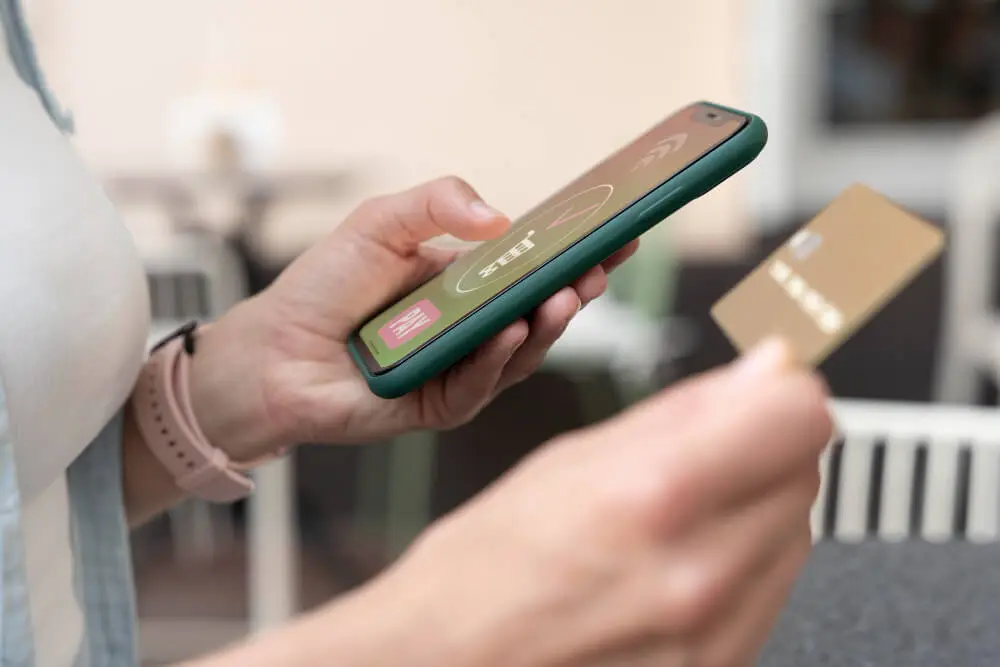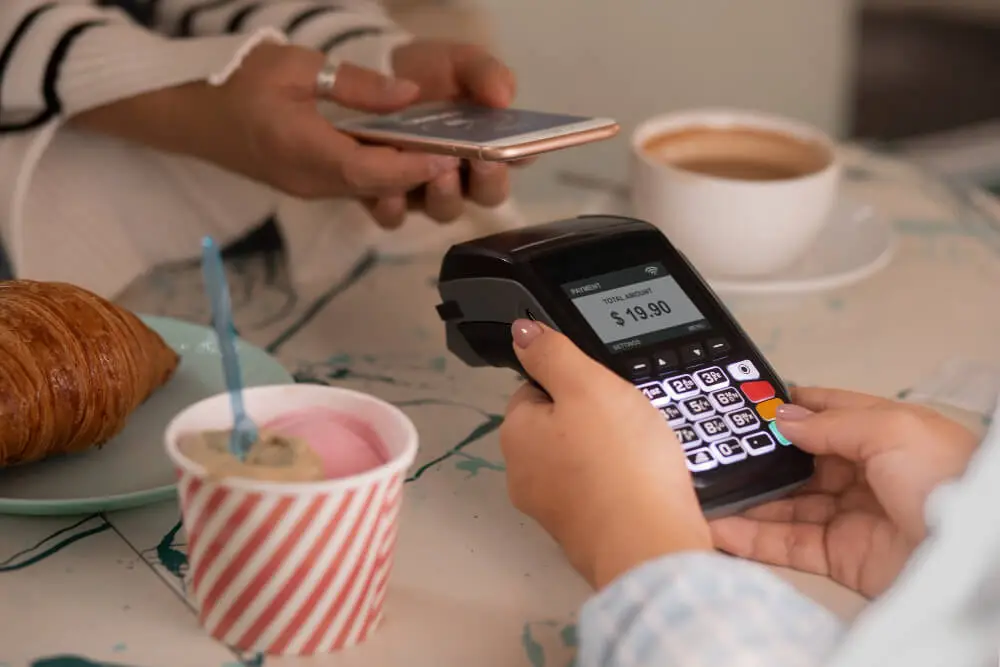In the ever-evolving landscape of today’s fast-paced world, technology has left its mark on every aspect of our lives, redefining even the way we experience dining out. Among the many digital innovations embraced by the restaurant industry, the surge of pay-at-table technology stands out as a prominent trend. This article reaches into the fascinating world of pay-at-table technology, explaining its definition, working principles, and the numerous benefits it offers to both customers and restaurant owners. Additionally, we will explore Fleksa’s innovative Payperse: An innovative QR ordering & payment system that is built with pay-at-table technology, allowing various payment methods, and the seamless integration of point-of-sale (POS) systems to elevate the dining experience further.
Recent Digital Transformation with Pay-at-Table Technology:
The restaurant industry has undergone a significant digital transformation in recent years, and one of the most notable developments has been the widespread adoption of pay-at-table technology. As consumers become more tech-savvy and value convenience, restaurants are eager to cater to these preferences. Pay-at-table solutions have revolutionized the traditional payment process, allowing customers to settle their bills efficiently and securely, all while remaining seated at their table.
What is Pay-at-Table Technology?
Pay-at-table technology is a cutting-edge system that enables customers to make payments directly at their dining table using digital devices, such as tablets or smartphones. It eliminates the need for customers to wait in line at the cashier or hand over their credit cards to servers, streamlining the checkout process and reducing wait times.
This technology is usually integrated into the restaurant’s ordering system, enabling customers to view their bill electronically, split the check if needed, and even add gratuity, all at their convenience. By leveraging the power of pay-at-table technology, restaurants can enhance customer satisfaction, improve table turnover, and boost overall operational efficiency.
Increasing Contactless Dining:
In the wake of the COVID-19 pandemic, contactless solutions have become more critical than ever. Pay-at-table technology fits seamlessly into the new normal of contactless dining. With the ability to minimize physical contact, customers can enjoy a safer and more hygienic dining experience.
The rise of contactless dining is not just a temporary response to the pandemic; it is a long-term trend that aligns with the preferences of modern diners who prioritize safety and convenience. Pay-at-table technology plays a crucial role in meeting these expectations.
How Does Pay-at-Table Work?
The pay-at-table process is remarkably user-friendly and efficient. Here’s a step-by-step breakdown of how it typically works:
- Placing Orders: Customers place their orders through a tablet or digital device or through QR code scanning provided by the restaurant.
- Order Processing: The restaurant’s POS system receives and processes the orders, relaying them to the kitchen or bar.
- Bill Generation: As the customers enjoy their meal, the POS system calculates the bill, taking into account any additional requests or modifications.
- Bill Presentation: Once the meal is complete, the digital bill is presented to the customers on the same device used for ordering.
- Payment Options: Customers have the flexibility to pay using various methods, such as credit/debit cards, PayPal, or cash.
- Transaction Completion: After the payment is made, the POS system records the transaction, and the receipt can be emailed or printed.
Benefits of Pay-At-Table Technology in Restaurant:
Pay-at-table technology offers a plethora of advantages for both restaurant owners and diners alike. Some key benefits include:
- Enhance Customer Experience: With quick and convenient payments, customers leave the restaurant feeling satisfied with their overall dining experience.
- Faster Table Turnover: Efficient payment processing means tables are vacated faster, allowing restaurants to serve more customers during peak hours.
- Reduce Wait Times: Eliminating the need to wait for the check or the server to process payments reduces the time customers spend at the restaurant.
- Contactless and Hygienic: Pay-at-table technology promotes contactless payments, contributing to a safer dining environment for all.
- Improve Order Accuracy: Digital ordering and billing minimize the chances of human errors in taking orders and calculating bills.
- Increase Staff Efficiency: Staff members can focus on providing better customer service and attending to other essential tasks.
- Upselling Opportunities: Digital menus and interactive interfaces can present upselling opportunities, increasing revenue for the restaurant.
Fleksa Pay at Table Technology: Payperse:
One of the leading players in the pay-at-table technology market is Fleksa, with its innovative Payperse solution. Payperse is a user-friendly and customizable pay-at-table platform that seamlessly integrates with a restaurant’s existing POS system.
With Payperse, restaurant owners can elevate the dining experience by offering customers an easy QR code payment & ordering process. The platform allows diners to split checks, add tips, and choose from multiple payment methods, all while ensuring the highest levels of security and data protection.
Fleksa’s commitment to continuous improvement and customer satisfaction has made Payperse a preferred choice for many restaurants seeking to enhance their operations and customer interactions.
Split Bill Payment
Payperse offers a range of common and customer-choice features, including the ability to Split the Bill according to each customer’s preferences. With Payperse, customers have the flexibility to pay for their orders separately or divide the total bill equally among the diners. Additionally, they can choose to pay a specific, personalized amount towards the bill, ensuring a seamless and convenient payment process tailored to their preferences.
Payment Method Use: Cash, Paypal, Credit/Debit Card:
One of the key advantages of Payperse is its versatility in accommodating various payment methods. Customers can choose from a range of payment options, including cash, PayPal, credit/debit cards, or even mobile payment platforms like Apple Pay or Google Pay.
This flexibility ensures that diners can settle their bills most conveniently and securely as possible. Moreover, offering multiple payment methods reflects a restaurant’s commitment to providing excellent customer service and catering to diverse preferences.
POS Integration:
For pay-at-table technology to work seamlessly, Payperse is always integrated with the restaurant’s point-of-sale (POS) system. POS integration allows for real-time synchronization of orders, payments, and inventory, streamlining the entire dining experience. The integration feature of Payperse ensures that the digital menu and billing are accurate and up-to-date, reducing the chances of discrepancies and delays.
Conclusion:
The rise of pay-at-table technology has transformed the restaurant industry, offering customers a seamless and convenient dining experience. From digital menus to secure payments and POS integration, this technology streamlines operations enhances customer satisfaction, and contributes to a safer dining environment. Fleksa’s Payperse stands out as an exceptional solution, epitomizing the benefits of pay-at-table technology. As the world continues to embrace digital innovation, pay-at-table technology remains a valuable asset for restaurants looking to thrive in the dynamic hospitality landscape.
Contact us to get a free demo of Pay at table system: Payperse






